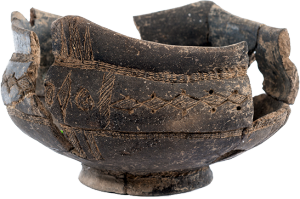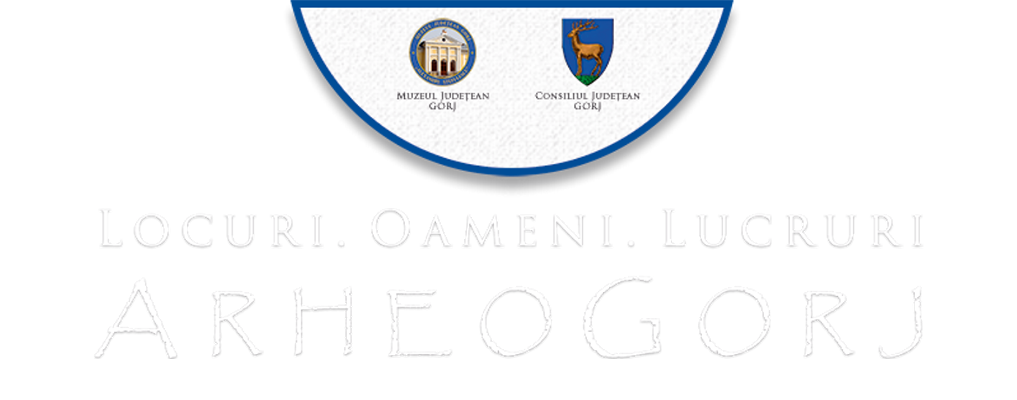
The archaeological research of Drăgoieni “Ferma 3“, extensive yet undertook in a relatively short period of time have shown that the investigated space holds particular archaeological potential. Its importance resides first of all in the succession of seven distinct stages of human dwelling.
The oldest stage can be attributed to the early phase of the Verbicioara culture and holds mainly domestic waste filled pits and ceramic fragments. The presence of burnt adobe pieces points to the existence of incinerated constructions, probably laying beyond the surface we have investigated.
 The second stage is dating from the Late Bronze Age and belongs to the evolved phase of the Verbicioara culture. To this stage numerous complexes with domestic waste and some pits can be attributed, the shape and depth of the pits being consistent with an initial use as supply deposits. As in the above-mentioned case, our findings consisted mainly of pottery and several fragments of bronze pieces.
The second stage is dating from the Late Bronze Age and belongs to the evolved phase of the Verbicioara culture. To this stage numerous complexes with domestic waste and some pits can be attributed, the shape and depth of the pits being consistent with an initial use as supply deposits. As in the above-mentioned case, our findings consisted mainly of pottery and several fragments of bronze pieces.
Later follow two sporadic habitation periods, one of the end of the Bronze Age (Bistreț-Ișalnița type) and another in the beginning of the First Iron Age (Vârtop).
The penultimate stage, poorly represented in our findings, belongs to a habitation from the middle of the First Iron Age, respectively of the Basarabi culture.
The impressive and varied quantity of discovered materials reflects a complex economical system, with regional connections in the neighbouring cultural environments. The conclusion is substantiated also by the existence of craftsmen specialised in bronze and ceramic working, stone, and bone or horn carving.
The habitation density in the first two stages expresses a probable period of stability, both from a political point of view and of the means of subsistence, transposed in a positive demographic dynamics.
The presence of pits with votive deposits and of objects having an initial use surpassing the profane sphere, desacralized, fragmentary and rolled together with ordinary ceramic fragments is probably mirroring the diversity of the various sides in this community’s spiritual life.
Least but not last, we have to stress out the fact that we are dealing here with one of the few settlements with an apparent continuity in habitation since the Middle Bronze Age to the Middle Hallstatt. Also, it is one of the first sites of the Gorj County where materials from the early stages of the Verbicioara culture are found.
Exhibit 1
Archaeological materials characteristic to Verbiciora culture and Govora cultural group.
- Flint blade; Verbicioara culture
- Stone axe fragment; Verbicioara culture
- Curved knife (Krummesser); Verbicioara culture
- Decorated spindle whorl; Govora group
- “Stick head”; Verbicioara culture
- Human leg representation; Govora group
- Cup fragment; Govora group
- “Fish salver”; Govora group
- Cup fragment; Govora group
- Cup; Govora group
- Bowl; Govora group
- Bowl fragment; Verbicioara culture
Exhibit 2
Archaeological materials characteristic to Bistreț-Ișalnița cultural group, Vârtop cultural grup and Basarabi culture.
- Bronze needle; Vârtop group
- Bronze phalera; Vârtop group
- Mould for bronze pieces; Bistreț-Ișalnița group
- Cup fragment; Bistreț-Ișalnița group
- Cup fragment; Bistreț-Ișalnița group
- Cup fragment; Bistreț-Ișalnița group
- Cup fragment; Bistreț-Ișalnița group
- Vessel fragment; Bistreț-Ișalnița group
- Vessel fragment; Basarbi culture
- Bowl fragment; Basarabi culture
- Vessel fragment; Vârtop group
- Bowl fragment; Bistreț-Ișalnița group

